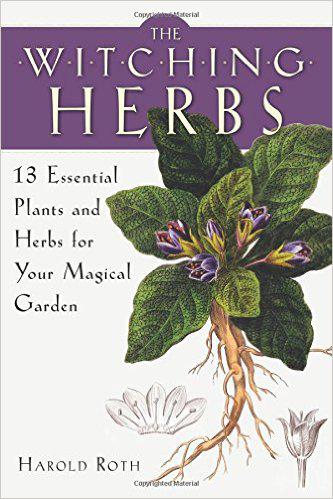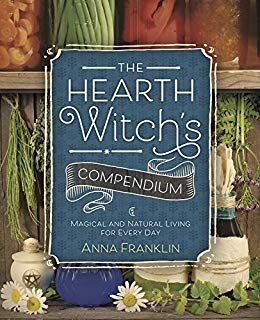The Witching Herbs: 13 Essential Plants and Herbs for Your Magical Garden
Harold Roth
Weiser, 2017

Review by Rebecca Bailey.
A plant is a sacred text,” Harold Roth writes in this wonderful book. The description, the plan, the story of the plant’s spirit,” he continues, and when you tend that plant and cultivate it and groom it, you indicate to its spirit that you are receptive to its contact.” (pp. 12-13). This book’s ambitious — and largely successful — goal is to marry the art of growing plants as a gardener with using plant magic as a practitioner of the Craft.
The thirteen witching herbs selected by the author are: poppy, clary sage, yarrow, rue, hyssop, vervain, mugwort, wormwood, datura, wild tobacco, henbane, belladonna, and mandrake. Roth relies on common names and does not emphasize the scientific binomials; in my reading, this is the book’s only significant flaw. While this is not a scientific text (although much good science is included, especially about plants’ chemical compositions), readers need to know exactly which species the author means. In this aspect, as well as others, the book’s primary audience is the intermediate to advanced practitioner.
His chapter “Cultivating Your Witch’s Garden” is a thorough introduction to establishing plants in your garden. As a lifelong gardener, I appreciate his emphasis on the spirituality inherent in bonding with plants we choose to cultivate. Roth’s self-deprecating humor shines when he confesses that although he can grow datura, he can’t grow a zucchini!
I like the way the author does not shy away from what he calls “the baneful plants,” especially those in the Solanaceae (nightshade) family. He presents information on just what exactly makes them baneful, largely tropane alkaloids that can produce sinister hallucinations and behaviors and can even kill. “New Age approaches to the natural world have meant that many no longer expect plant spirits to have anything but calm and wise personalities” — in contrast, “datura gets a bang out of messing with people” (p. 178). The chapter for each baneful plant contains copious, explicit, and vivid warnings about their effects, from merely smelling the flowers to touching their leaves with ungloved hands.
This unique and well-written volume includes lore, cultural history, growing tips, instructions for magical uses of each plant and a comprehensive bibliography. A worthy addition to a green witch’s library.
I’ll give Harold Roth the last word: “No one can gainsay healthy witching herbs that you grow yourself. They are there as proof of your hard-won expertise. I hope this book leads you to experience the satisfaction, confidence, and knowledge that are born from the serious practice of growing the witching herbs and devotion to their spirits” (p. 245).







